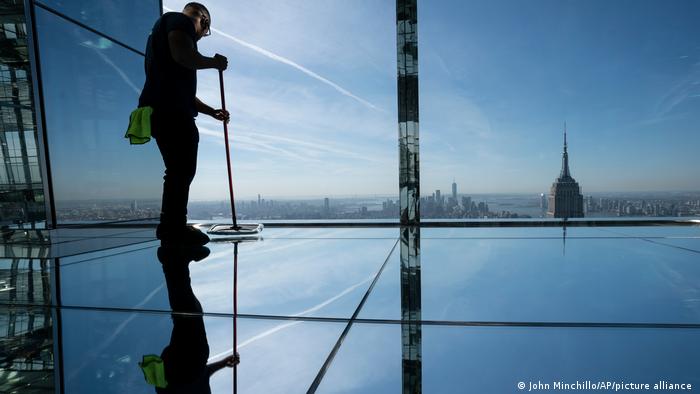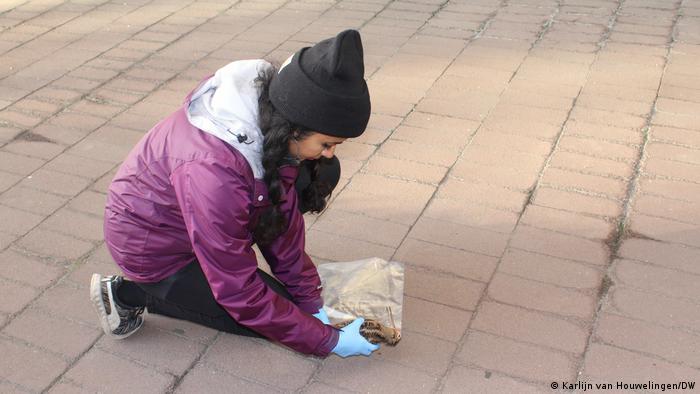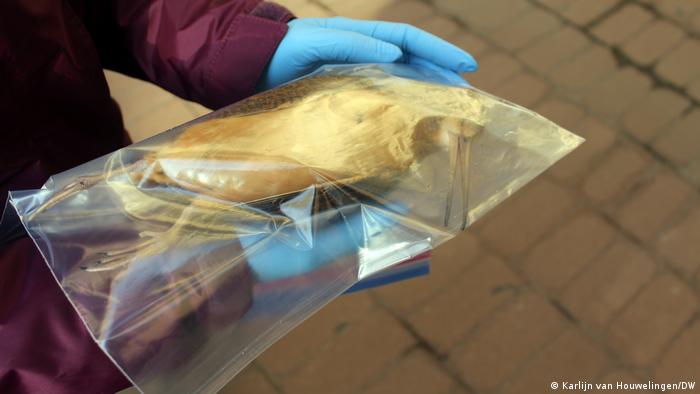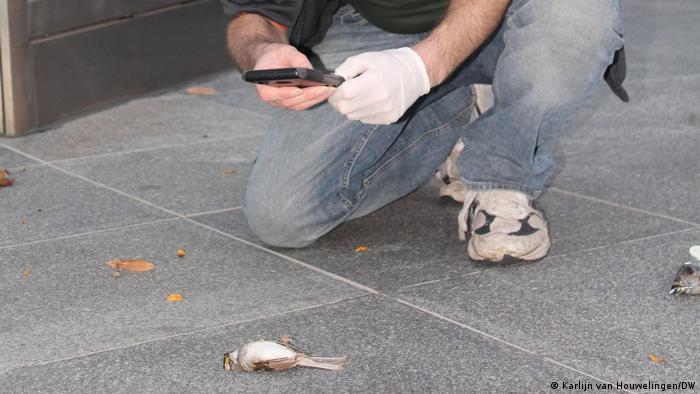 Louis Riel and the Northwest Rebellion
Louis Riel and the Northwest Rebellion
The origins of Western Alienation, embraced today by the Conservative Right in Alberta, was in the Northwest Rebellion.
And it was the Conservative government of MacDonald that imposed it's colonial, read Ontario, domination over Western Canada to avoid the creation of an autonomous government. In short to stop the creation of a Quebec in the prairies.
Ironic isn't it, that the loudest voices crying out that 'West Wants In', are the heirs of the Ontario Imperialists of the Conservative party of MacDonald.
Those who supported an autonomous West were the Quebecois. Not out of spite over the loss of independence after the battle of the plains of Abraham, but out of a belief that Canada was a federation of peoples.
1867: Four provinces choose to sign the new federation project; Ontario, New Brunswick, Nova Scotia and Lower Canada that will now be known as the province of Québec. The vote is very close, but finally, the federation passes in Québec (27 for, 22 against). But George-Étienne Cartier, one of the fathers of this federation along with MacDonald, originally saw this as a pact between two people: the French-Canadien and the English. In truth, the deal offers nothing of the sort, and the people of Québec are absolutely not recognised as an equal partner in this deal. Québec is nothing more than a province among four. These two visions of what Canada should be still clash today. It's the "Québec is a people and a nation different from the rest of Canada" vision versus the "Québec is just a province like the others" one. The new dominion of Canada will know a new age of prosperity, but the people now referred to as "French-Canadians" do not benefit much from the great games of finance and commerce, and remain a largely exploited work force. To boot, they are now nothing more than a minority in an officially "bilingual" country, where in fact, practice imposes English. Quebec First Era: from Federation to the Quiet Revolution (1867-1960)The Quebecois viewed Quebec as one region, Ontario as another, and that the West was itself an autonomous region that should determine for itself, it's role in Confederation. That was not to be as the Ontario mercantilists, with their support from the British Crown and its monopoly corporations like the Hudson's Bay Company declared the West theirs, and used the North West Mounted Police and colonialist property owner militas to exert its rule .
The result was the Riel Rebellion, the great North West Rebellion where the West declared itself an autonmous region with its own government of the peoples by the peoples, including Metis and Natives, as well as settlers.
Métis Bill of Rights
| PROVISIONAL GOVERNING COUNCIL BILL OF RIGHTS This is the formal List of Rights drawn up by the Provisional Governing Council of the Metis Nation, as the formal conditions for the entry of Rupert's Land into Confederation on December 1, 1869. - That the people have the right to elect their own legislature.
- That the legislature have the power to pass all laws local to the Territory over the veto of the Executive by a two-thirds vote.
- That no act of the Dominion Parliament (local to the Territory) be binding on the people until sanctioned by the Legislature of the Territory.
- That all Sheriffs, Magistrates, Constables, School Commissioners, etc., be elected by the people.
- A free Homestead and Preemption Land law.
- That a portion of the public lands be appropriated to the benefit of schools, the building of bridges, roads and public buildings.
- That it be guaranteed to connect Winnipeg by rail with the nearest line of railroad, within a term of five years; the land grant to be subject to the Local Legislature.
- That for the term of four years all military, civil and municipal expenses be paid out of the Dominion funds.
- That the Military be composed of the inhabitants now existing in the Territory.
- That the English and French languages be common in the legislature and courts and that all public documents and acts of the legislature be published in both languages.
- That the Judge of the Supreme Court speak the English and French languages.
- That treaties be concluded and ratified between the Dominion Government and the several tribes of Indians in the Territory to ensure peace on the frontier.
- That we have a fair and full representation in the Canadian Parliament.
- That all privileges, customs and usage existing at the time of the transfer be respected.
This meeting took place in Fort Garry on Wednesday, December 1, 1869. |
Photograph of Gabriel Dumont at Fort Assiniboine,
May 1885; Glenbow-Alberta Institute.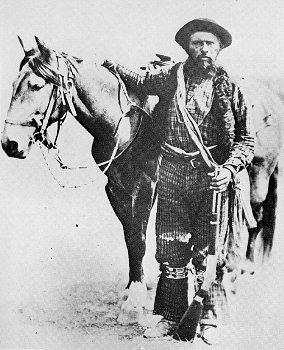
This was the peoples charter that Gabriel Dumont, and the Metis Council crafted and invited Louis Riel out of exile in the U.S. to join them in a Metis reistance in Western Canada. The demand for self government spread through out the West from Winnipeg to the Saskatchewan Alberta border.
Dumont impressed George Woodcock, 'the gentle anarchist' of Canadian letters, who wrote a biography of Ghandi as well as Dumont. As a pacifist anarchist Woodcock, a transplanted Brit, living and teaching in Victoria, saw Dumont and the Northwest Rebellion as a struggle for an indigenous form of self government that was completely different from the parilmentary system imposed on Canada by the Conservatives and their British masters.
From his birth at Red River (now Winnipeg, Manitoba) in December of 1837 to his death in 1906 at Batoche, 100 kms (60 miles) north of Saskatoon on the South Saskatchewan River, Dumont saw the bison go from a seemingly unlimited renewable resource to near extinction. He observed Saskatchewan change from a teeming and wild land of grasses, rivers and forests - a land without boundaries - to a tamed, measured-out patchwork of farmland tended by sod-busters from somewhere else. And he witnessed a freedom-loving people become subjugated to a fiefdom in the faraway, insensitive capital of Ottawa, a place whose foreign laws were carried out by the disciplined, military-like Redcoats of the North-West Mounted Police."Though illiterate, Dumont's first request to the territorial government was for education for Metis kids," Woodcock writes in Gabriel Dumont. "His next request was for land. It's the Conservative government of Sir John A. Macdonald's unheeding of injustice and unresponsiveness to land claims that led to revolt."
Dumont's background as an Indian fighter and buffalo hunter made him a formidable foe for the North-West Mounted Police and federal forces. A true guerrilla fighter, he used the element of surprise and his knowledge of the land to great effect.
Riel was a martyr, perhaps with messianic delusions. But Dumont, writes Woodcock, was a Canadian hero in the "high romantic vein," like a Homerian protagonist, the "greatest Metis buffalo hunter, who had no superior when it came to the wisdom of the wilds." Gabriel Dumont by Gordon McIntyre
1869 and 1884-85 : Ottawa plans a new Canada "from coast to coast" and wants to send new settlers in the lands between Ontario and British-Columbia. In doing so, the MacDonald government ignores the presence of the Natives that already live there, like the French-speaking Manitoba Métis. Louis Riel takes the lead of a rebellion that will oppose him to Ottawa. The Canadian government has absolutely no intention of seeing a second Québec emerge in the west and sends the army to crush the rebels. Riel and eight Native chiefs are sentenced to death by an exclusively English-speaking jury. Québec strongly denounces the verdict and Montréal is on the verge of ethnic war. MacDonald declares "Even if all the dogs of Québec bark, Riel will be hanged!" (approximate translation). In Québec, all wear black armbands in memory of the "lost brother". Once more, one's hero is the other's enemy.Quebec First Era: from Federation to the Quiet Revolution (1867-1960)
Poundmakers Surrender Speech (exerpt)
"When you came, we treated you well. What did you do in return? You stole our land. You shared a little food with us. And you said you paid for it. You killed off our buffalo for no useful purpose for you. We did not destroy the buffalo. We know they are useful. Everything we needed came from them. What will you destroy next?
When I was a young man, I often went on a war party. We rode all day. And all day we passed through herds of buffalo. The plains were black as far as one could see with herds of buffalo. We killed one only for food.
After the whites came, the buffalo became fewer and fewer. We all know that. We began to hate the white persons. They were robbing us of our birthright. We became very poor. We wandered to the south. The buffalo were not coming back. We were told, "the land is not yours anymore. We were to stay only on our small patches of land that were leftover (iskonikana). Our grandfathers travelled on these great plains and called it their own.
Why do I have to live on a small patch like the white persons? I only want my freedom."
The general's reply to Poundmaker's speech was that the Indians had defied the government by taking up arms; that their members had killed farmer instructors and Indian agents. "These men must be given and tried and punished." Poundmaker, as chief, would be taken hostage and remain a prisoner for the good behaviour of his people.
Ah yes hostage taking, like concentration camps and homelands in South Africa modeled on Indian Reserves in Canada, were all introduced by the British. Hostage Taking was introduced into into the Middle East by T.E. Lawerance, where it is still a popular tactic today.
The Northwest Rebellion is known in the United States as the period of the Plains Indian Wars, as American settlers, and robber barons move westward. Had the Riel Rebellion succeeded, like the failed rebellion of farmers and artisans in 1837 in Upper and Lower Canada, then the history of North America, not just Canada would have been different.
The alternative would have been a Metis, White, Native nation from Manitoba across the Prairies, south to the Dakotas and West to the Pacific Nothwest.
"Poundmaker and the legendary Big Bear, who was forced by starvation of his people to finally take treaty in 1882, were leaders in the fight for fair treatment. "The principle strategy of the Indian leaders was to build a widespread political movement," says Stonechild, "like the political lobbying type of thing you see today.For their roles in the rebellion, Poundmaker and Big Bear were sentenced to three years each in Manitoba's Stoney Mountain Penitentiary. As a sop to Crowfoot, whom Ottawa did not wish to anger, Poundmaker's hair was not cut and he was released after serving only seven months of his sentence. Still, his health suffered in prison and he died just months after his release, while visiting his adopted father Crowfoot. The year was 1886. He was 44." Poundmaker by Dave Yanko
In 1887 Louis Riel is hung as a traitor against the Conservative Government in Ottawa. In Quebec the people take to the streets to protest the political execution of Riel, in Ontario the ruling class and its Conservative Party clinks glasses and celebrates the death of the 'traitor' Riel with the comprador politicians from Quebec..
November 22 1885, to the March Field, Montréal
The emotion is at his height. Louis Riel has just been hung to have dared to claim the rights of its compatriots. While Ontario celebrates, the Quebecois are completely dismayed. The shops are closed, the tocsin resounds. November 22, on the March Field, takes place one of the more moving gatherings of the history of the Quebec. Fifty thousand persons attend the event, carrying to the arm the black armband of the mourning. On the tribune, several speakers succeed themselves to denounce the federal government of the Conservatives, but the one that book the words more memorable Is Honored Haberdasher. Here the transcription of this that again today is considered as the one of the bigger speeches of the history of the Quebec. Note that to this era, one used the term "race" for done reference to the "populates". Riel, our brother, dead east, victim of his devotedness to the cause of the Hybrid one of which it was the boss, victim of the fanaticism and treason; fanaticism of Sir John and of someone of its friends; treason three of the ours that, to keep their wallet, sold their brother. While killing Riel, Sir John did not only hit our race to the cœur, but it especially hit the cause of justice and humanity that, represented in all the languages and sanctified by the whole beliefs religious, required grace for the prisoner of Regina, our poor brother of the North-Ouest…We here fifty thousand citizens, met under the protective aegis of the Constitution, in the name of the humanity that screams vengeance, in the name of two millions of French in pleurs, to launch to the federal minister in escape a last malédiction that, passing on itself echo in echo on the shores of our big river, will go to attain it the moment it will lose view the earth Judicial. As for those that remain, as for the three that represented the Quebec province in the federal government, and that do not there represent more than the treason, bend the head in front of their failure, and cry their sad one goes out; for the blood spot than they carry to the forehead is indelible, as to remember it of their cowardice. They will have the goes out of their brother Caïn. Opposite this crime, in the presence of these failures, which is our duty? We have three things to do: we to unite to punish the guilty ones; break the alliance that our representatives did with the orangisme; and look for in a more natural alliance and less dangerous the protection of our national interests. We to unite! Oh, that I feel comfortable while pronouncing these words! There are twenty years that I ask the union of all the lively forces of the nation. There are twenty years that I say to my brothers to sacrifice on the altar of the fatherland in danger the hates that we blinded and the divisions that we killed. […] it was necessary the national misfortune that we deplore, it was necessary the death of the one of the ours for that this rallying cry fût understand. […]And then, do not forget, we liberal, that if the nation in mourning because of the assassination of Riel, the conservative ones our brothers are damaged in a deeper pain than the ours. They cry Riel as us, but also they cry the fall and the treason of their bosses. Them that were if proud and with reason, of Chapleau and of Langevin, that see in the the one eloquence and in the skillfulness of the other the good day country, are obliged to bend the head and to curse today those that they blessed yesterday. […]Chapleau refused the hand of a brother to keep the one of Sir John; it preferred the screams of some fanatics to the Canadian French one the whole nation blessings; it preferred the death to life; the death for him, the death for Riel; his career is broken as the one of Riel, only this one fell in man, that one in traitor!
For an good political analysis of the Northwest Rebellion and its importance in defining the West read Beal, Bob; Macleod, Rod. - Prairie fire : the 1885 North-West Rebellion. - [Rev. ed.] - Toronto : McClelland & Stewart, 1994. - 384 p.
And thus began the histoirc annexation of the Canadian West by the mercantilist monopolies of the CPR and Hudson's Bay Comapny under the armed rule of Conservative Party hacks in Ottawa, British colonial governors like the Selkirk family in Manitoba, and their colonial military force the NWMP.
McLean, Don. - 1885 : Metis rebellion or government conspiracy? - [S.l.] : Pemmican Publications, 1985. - 137 p - Claims that the Conservative government forced the Métis into rebellion in order to save the Canadian Pacific Railway financially.
- Rea, J.E. - "The Hudson's Bay Company and the North-West Rebellion". - The Beaver. - Outfit 313, no. 1 (Summer 1982). - P. 43-57
With Indian lands ceded to the railway, the CPR needed farmers and workers to open up the West. They invited immigrants to come and farm on homestead land, adjacent to the railway. Winnipeg boomed as the grain capital of North America, directly linked to the Chicago Grain Exchange, today the castles of capital still stand in the wind swept streets of a depressed Winnipeg. The great banks that Wobbly Joe Hill sang about, stand empty and dead, where they once ruled the Western expansion of eastern capitalism.
The second wave of Western alienation came with rise of a militant labour and socialist movement in the West. The west was RED before it was Red Neck. The IWW and the Socialist Party of Canada with its militant industrial union, the One Big Union (OBU) were active across the Prairies. The OBU itself was created in 1919 in Calgary, on the eve of the Winnipeg General Strike. Ukrainian, Scots, Irish, Icelandic, Finns, Germans, and Jews from Eastern and Central Europe homesteaded the land and took jobs in the mines and forests. They created their own socialist organizations and newspapers, like the Ukrainian Labour Farmer Temple.

During the 1919 Winnipeg General Strike, and its brutal repression by the RCMP, many immigrants were deported as enemy aliens and Bolsheviki, by the Conservative Party and the ruling class in Ottawa.
After the boom of the 1920's farmers and workers organized across the prairies into political parties, in Alberta the United Farmers of Alberta was a coalition of farmers and labour activists. The platform included recall of MLA's and referendums. Ideas that today have been taken up by the Right Wing.
The CCF, the Cooperative Commonwealth Federation, (later to become the NDP) was founded in the Grain Exchange building in Calgary in 1932. It was the original Western Reform Party. It then came out with a socialist declaration entitled the Regina Manifesto, in 1933. A fitting tribute to the original Prairie populist Lous Riel , who was imprisoned and hung in Regina.
During the Depression out of the West came the On to Ottawa Trek that the Left in Canada challenged the Borden Conservative government to end the concentration camps for the unemployed, and called for a living wage at the time, unemployment insurance and a social safety net.
The complaints of those in the West were always the same, we had a different vision of Canada, one that like the original Metis declaration called for autonomy, and direct government.
Today those socialist bashers on the right who identify with U.S. Republicanism and equate their wanna be Americanism with Alberta Seperation, or with right wing populism of the Reform/Alliance/Conservative party, or even cheer on Ralph Klein as he bashes Ottawa, would do well to learn their history lessons of Western Canada's past. It is a libertarian socialist history not a right wing one.
Sure the West wants in, but we want a new confederation as do the peoples of Quebec. This is not about giving right wing governments in the provinces more power, this is about creating a new federation, which was the original vision of Papineau, Mackenzie, Dumont, Riel, Poundmaker, Carl Berg, Pritchard, and J.S.Woodsworth. A peoples confederation, a federation of the self governed, a Cooperative Commonwealth, not a Conservative or Liberal government in Ottawa, but proportional representation, that cedes decision making to local levels of govenment, whether it is muncipalities, or native self government.
The provinces of Alberta and Sasksatchewan are celebrating our centennials but so are the IWW and the Socialist Party of Canada, equally founders of the West . The provinces are creatures of Ottawa, our muncipalities are founded by the peoples who live here. Their power was taken away despite ancient British traditions that recongized the autonomy of cities and their aldermen, in order for the State to expand its empire in the West. Provincial autonomy is tyranny of the State over the popular political insitiutions of the people:
- That all Sheriffs, Magistrates, Constables, School Commissioners, etc., be elected by the people.
- That a portion of the public lands be appropriated to the benefit of schools, the building of bridges, roads and public buildings.
In the West our history has been shaped by the British Colonialists of Canadian Confederation and their mercantilist partners the HBC and the CPR. In our history lessons we learn little of the Native, Metis or immigrant struggles, settling instead for the history of the victors. We are not taught that Quebec supported the West and it's struggle to be an autonomous self governing region, an equal partner in Confederation. Instead we are taught all that rebelious Quebec wanted was French speaking rights, and their support of Riel was to spite the English rulers in Ottawa.
I believe the speech reprinted below by Louis-Joseph Papineau exposes the lies of the origins of Confederation as a common agreement between regions. His is an alterantive history of Canada, that has not been available in the West in our social studies classes in school.
Papineau was no mere Quebec Nationalist, he was a Canadian, who saw this as a new country, one like the United States, offered a new land, and a new federation of peoples, in his Speech to the Institut Canadien he preciently predicted Canada would become not just a home to European Immigrants but Asian immigrants as well. This is his speech on Confederation, a Quebec ideal that was usurped by the familial and mercalintalist interests in Ontario. His idealism and his vision of Canada fits well with those of us in the West.
Papineau led the 1837 rebellion for a government of the people, for a constiuent assembly against the vested interests of the Family Compact. Papineau passed legislation, the first in Canada, giving Jews the vote.
During the Spanish Civil War, the left in Canada who joined the international Brigades named their Brigade the Mackenzie-Papineau Brigade, the Mac-Paps, in honor of the heros of the 1837 Rebellion.
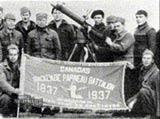 Alberta politicians have always aligned with Quebec, for their own political and provincial interests against the Ottawa power brokers for sure, but Quebec's view of history is little revealed to the average person in the West. Instead these same politicians invoke Quebec's vision of Canada, as the 'selfish aggrandizment of special powers and intersts', which of course they should get as well.
Alberta politicians have always aligned with Quebec, for their own political and provincial interests against the Ottawa power brokers for sure, but Quebec's view of history is little revealed to the average person in the West. Instead these same politicians invoke Quebec's vision of Canada, as the 'selfish aggrandizment of special powers and intersts', which of course they should get as well.
The people in the West have always wanted a different kind of Confederation, but our own ruling class uses this 'alienation' as a cheap trick to maintain their own power base, which has moved from Winnipeg in the 19th and early 20th Century, to Calgary in the 21st Century.
I would advise that reading this whole speech would be revealing of the half truths and lies that have shaped English Canada's version of what Quebec wants for Canada. And indeed the real history of Canada and Confederation as the betrayl of legislative authority and its usurption by the landed aristocracy of British mercantilism. As it is I have exerpted portions I feel are pertinent to this article.
1867 Speech of Louis-Joseph Papineau at the Institut canadien Among the most important and useful truths, those that pertain the the better political organization of a society are at the forefront. They are among those of which it is a shame to have not studied carefully, and cowardly to dare not proclaim, when we believe that those we possess are true and therefore useful.
The good political doctrines of modern times, I find them condensed, explained and delivered for the love of peoples and for their regeneration, in a few lines of the 1776 Declaration of Independence, and the 1789 Declaration of the Rights of Man and of the Citizen.
The true sociological doctrines of modern times can be summed up in a few words: Recognizing that, in the political and temporal order, the only legitimate authority is the one to which the majority of the nation has given its consent; that are wise and beneficial constitutions only those for which the governed have been consulted, and to which the majorities have given their free approbation; that all which is a human institution is destined to successive change; that the continuous perfectibility of man in society gives him the right and imposes him the duty to demand the improvements which are appropriate for new circumstances, for the new needs of the community in which he lives and evolves.
It is not the precipitated acceptance of the butched Quebec Act of confederation that can prove the wisdom of the statesmen of England. It is not their work; it was prepared in hiding, without the authorization of their constituents, by some colonists anxious to stud themselves to the power that had escaped them. The sinistre project is the works of badly famed and personally interested men, it is the achievement of evil at the British Parliament, surprised, misled, and inattentive to what it was doing. At first sight, the act of confederation cannot have the approval of those who believe in the wisdom and the justice of the Parliament and the excellency of the English constitution, since it violates its fundamental principles, by taking control over the sums of money belonging to the colonists alone and not to the metropolis nor to any authority in the metropolis. It is guiltier than any of the preceding acts. It has the same defects, and it has new ones, which are unique to it, and which are more exorbitant against the colonists than were those of the parliamentary charters granted or imposed before. The others were given in times and conditions that were difficult and exceptional. The transfer of a new country, with a majority whose religious beliefs and political education differed deeply from those of the minority, could have let us fear that the latter be exposed to denials of justice. Full religious tolerance, the most important of the rights which belong to men in society, had not been understood nor allowed at the time. England was persecuting at home, insane and unjust; she was insane and unjust here, here more than elsewhere, because the public law was supposed to protect us from evil. She ignored it. If she had restricted herself to protective measures for the minorities, she would have been praised; but she exceeded the goal, she oppressed the majority, she did wrong. But it was then a common error which misled her and which excuses her. The odious laws of intolerance are repudiated by all of the civilized world today, except for Rome and St. Petersbourg. There too however, sooner or later it will be necessary to render justice at the sight of the benefits which it pours on the States which respect it.
The concision in the word of Cavour: "The free Church in the free State", is one of the most beautiful titles given to respect, love and admiration, justly acquired by this famous statesman. These happy words, which once stated can never be forgotten, which, in a short sentence, contain a complete and perfect code on the subject they expose and explain, in one moment, -- as if all the tongues of fire of the Coterie had touched all those which tried to retain them -- allow us to understand, love, and proclaim the full truth which was only obscurely perceived and timidly loved before. And yet this revelation, sudden for a lot of people, is already codified, since a long time, for all, in the thirty-six States of the Union next door.
The free, independent Churches, separated from the State, do not require anything from it in presence of one another, are the happiest and become most useful, because of this separation from the State and the proximity of their rivals. They rely on their knowledge and their virtues, they do not require nothing else. They as nothing of what they consider useful to the promotion of their cult, all to the benefit of all their ministers, their charity, and their benevolent organizations. Watching one another, they are eminently moral, because the exposure and publicity would punish each fault they commit. No fault being able to go by unpunished, one will rarely occur. Where only one Church rules, it is not useful, it represses heresies, schisms and witches. Its adversaries claim: "it must necessarily be that it is wrong, if it is so cruel." and its friends say: "it must necessarily be that it is divine, if it obtains support in spite of these cruelties."
When the right to freethinking, whether religious, political or scientific, is as generally proclaimed as it is it by the laws, the values and the practice of our days, it cannot be lost. Judicious people will not need to demand it later.
Other parliamentary acts against Canada were acts of rigour, following disorders which would have been prevented by a tiny portion of the concessions that were granted much too late. The merit of these concessions is small and has little value, because they were made only after executions which were murders.
The present act was inflicted to provinces which were peaceful, where there no longer existed animosities of race or religion to calm down. Where nobody was guilty, all were punished, since they received a law for which they were not consulted.
This new governmental plan reveals, more than the others, the violent animosity of that the aristocracy feels towards elective institutions. It was only after long years of ceaseless efforts that the Legislative Councils were made elective. Did those who had been morally glorified by tearing off this important concession to the colonial and metropolitan authorities glorify themselves much today by ravishing it to their compatriots? On the contrary, they felt and they knew that they would not escape the contempt that these tergiversations deserved. They fought among themselves with eagerness to obtain nobility titles from overseas. They defrauded on the one hand their country and other the other they were even defrauding among themselves for the superiority of the rank; and they found ways to associate many accomplices to their shame, as if it was less dark because it was shared! They promised the elected counsellers to have them counsellers for life. They created themselves a fake aristocracy, that became such by their participation in an obvious violation of the law. All these intrigues were immoral enough to please the English cabinet and to push it to adopt an act even worse than almost all its past wrongs. These reactionaries were asking the institutions of the Middle Ages back at the very moment the noble English people was demolishing them.No, it is not true that the political discussions, which were as sharp in both Canadas, were a fight between races. They were as rough in Upper Canada, where there was only one nationality, than here, where there were two. The majorities of both of them were uninterested friends of rights freedoms, and privileges due to all the English subjects. They were voluntarily exposing themselves to liefull slanderings, to dangerous angers, to sanguinary revenges sometimes, from egoistic minorities, by themselves weak, but supported by the strenght of the bayonnettes paid with the gold of the people, but everywhere directed against the people.The privileged people always think that the prayers and the complaints against the abuses which benefit them are an invitation to repress them by violence. Proud, just and enlightened men, whose convictions are intense because they are the result of strong studies and long meditations, have faith in the empire of reason, and it is for reason alone that they ask the correction of the abuses. Their efforts are addressed to all, to the powerful ones initially, to inspire them sympathy for the people that are suffering and that were impoverished by the abuses. They present them with glory and happiness to conquer, if they know how to render the society of their time more prosperous and more moral that it was it in the times which preceded. They address them initially and preferably, because their mind being more cultivated, they would be better prepared to be able to consider questions of general interest under all their various aspects, and to solve them quickly and correctly when selfishness does not blind them. They address the masses after, to say them that the sabre is not in their hands, but that reason is the richest and most invaluable of divine gifts and that it was separated almost equally amongst all, that the culture of the mind can centuplicate its fruitfulness and strength; that to clear the land one needs physical strenght enlightened by experience, but that in order to make good constitutions and good laws, and to apply them wisely, it is necessary to have before all a strong reason, enlightened not only by serious studies, but above all by a real devotion to the country, and the absence of any personal covetousness of ambition or interest. Here is what could seen before, here is what has since become so rare, now that fortunes acquired at the expense of the public and personal honor, have become so numerous! How badly do these reproaches of propensity to violence come from those who constantly have recourse to violence to prevent the free discussion of political or social questions, physical violence by means of the law, moral violence by the anathema!
Papineau was 81 years old when he appeared at the Institute in 1867
